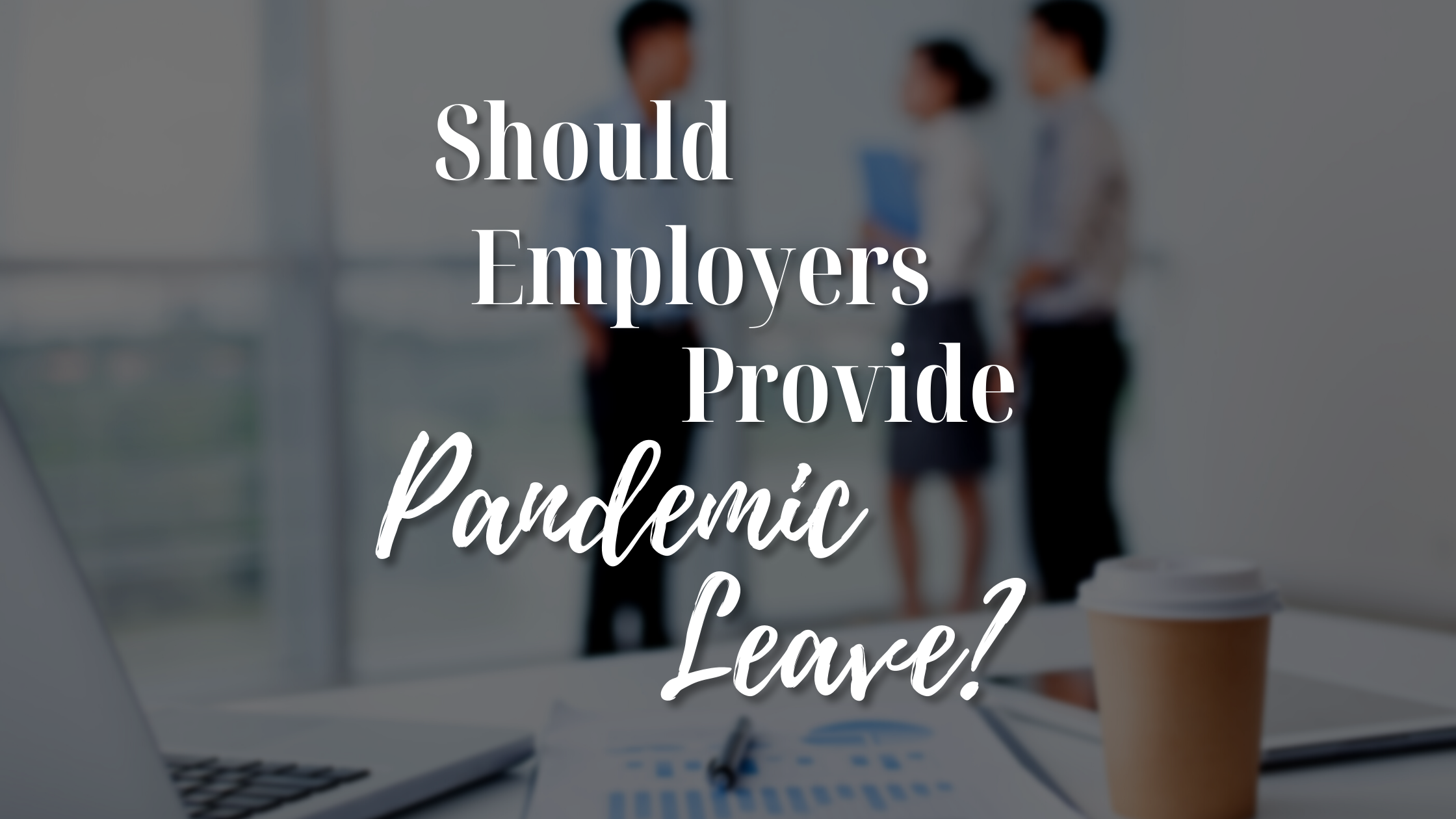Should Employers Provide Pandemic Leave Though FFCRA Tax Credit Has Expired?

Article originally published by SHRM.org on December 2, 2021. Written by Allen Smith, J.D.
The Families First Coronavirus Response Act (FFCRA) tax credit for COVID-19-related paid leave expired Sept. 30, following the American Rescue Plan Act’s (ARPA’s) extension and expansion of the credit until then earlier this year. Employers now wonder if they should continue providing paid pandemic-related time off. Giving employees paid time off from work when they or family members are ill can help fight the coronavirus, including the omicron variant.
“There are a number of different factors that may play into whether employers want to grant additional leave for certain COVID-related reasons: [providing] additional benefits to attract and retain workers, incentivizing vaccination and—of course—[considering] whether the employer can afford the leave,” said Fiona Ong, an attorney with Shawe Rosenthal in Baltimore. “Many smaller employers are facing serious economic challenges and may not be able to afford to give additional paid leave.”
 FFCRA Provisions
FFCRA Provisions
The FFCRA, signed into law on March 18, 2020, had two major provisions: the Emergency Paid Sick Leave (EPSL) Act and the Emergency Family and Medical Leave (EFML) Expansion Act. Under the EPSL Act, private employers with fewer than 500 employees and some public employers had to pay sick leave of up to 80 hours, or roughly 10 days, to employees who needed to take leave for certain coronavirus-related reasons.
Under the EFML Expansion Act, employees were eligible for an additional 10 weeks of family leave paid at two-thirds of their regular wages to care for a child whose school or place of care is closed or whose child care provider is unavailable because of COVID-19. The FFCRA doesn’t have requirements for private-sector employers with 500 or more employees.
Several employers have decided to provide voluntary sick leave since the FFCRA tax credit expired but not the expanded family and medical leave, said Mike Mahoney, an attorney with Ogletree Deakins in Morristown, N.J. “Those employers believe that arrangement strikes the right balance of ensuring that sick employees would not feel obligated to show up for work, while limiting the impact a 10-week absence from work may have on business objectives.”
He said that the ongoing risk of spreading the virus is a strong reason to continue offering COVID-19-related leave. However, he added that this decision is based partly on the industry, business financial strength and type of work environment.
“A business needs to weigh the impact of having an employee out on leave with the risk of having an employee arrive to work while sick,” he said. For example, manufacturing plants that face a significant shutdown if a group of employees become infected may be more cautious, whereas a business that mainly has telecommuting employees may not see as much of a need to provide COVID-19-related leave.
Additional COVID-19-Related Reasons
Under ARPA, signed into law March 11, FFCRA tax-credit availability was extended for paid sick leave and paid family leave from April 1 to Sept. 30.
ARPA also amended FFCRA to make a tax credit available during that period for these additional reasons:
- The worker is getting a COVID-19 vaccine. This would include booster shots, as there isn’t a limit on the number of vaccinations for COVID-19 or specification of which ones are covered.
- The employee is recovering from complications due to receiving the vaccine.
- The worker is awaiting the results of a COVID-19 test or diagnosis for coronavirus.
“The only currently existing needs for leave that were covered by the FFCRA are because of the employee’s own illness, for an unvaccinated employee to quarantine following exposure, to care for a family member who is ill or quarantined, to obtain a vaccine, and to recover from the adverse effects of a vaccine,” Ong said. She noted that schools and child care facilities have reopened.
Many employers already provide sick leave or paid time off that can be used for any of these reasons, so they do not see the need to provide additional leave, she said. “Some, however, may not provide such paid leave and thus may wish to continue providing COVID-related leave for certain reasons, like the employee’s own illness,” Ong said.
She added that some employers are using COVID-19 leave as an incentive for vaccination. “They will provide additional paid leave to vaccinated employees who fall ill, but unvaccinated employees who contract COVID have to use existing leave or only get unpaid leave.”
ETS Provisions
Under the Occupational Safety and Health Administration’s (OSHA’s) emergency temporary standard (ETS), now temporarily blocked, employers with at least 100 employees must require workers to get vaccinated or tested weekly for COVID-19.
In a frequently asked question on the ETS (Question 5.A), OSHA states that employers must support COVID-19 vaccination for each employee by providing reasonable time to each employee during work hours for each of their doses to get fully vaccinated, including up to four hours of paid time, at the employee’s regular rate of pay. Note that booster shots are not included in the definition of fully vaccinated under the ETS. The maximum of four hours of paid time that employers must provide for each dose can’t be offset by any other leave that the employee has accrued, such as sick leave or vacation leave.
OSHA stated that it was concerned that employees who were forced to use their sick leave or vacation leave for vaccination would opt not to get the vaccine.
If an employee chooses to receive a vaccination dose outside work hours, employers aren’t required to grant paid time to the employee for the time spent receiving the vaccine, OSHA added.
The Way Forward
The end of the federal tax credit “is an occasion for employers to figure out what type of leave program best suits their business,” said Hugh Murray III, an attorney with McCarter & English in Hartford, Conn. “The COVID-19 experience may well cause employers to rethink the policies that more generally apply to employee illness.”
Ong stated, “As long as COVID continues to spread at a high rate, some employees will continue to have a need for leave. Then the issue is whether the employer already provides other leave that can be used for COVID reasons, or whether the employer has the interest and financial ability to provide additional leave.”